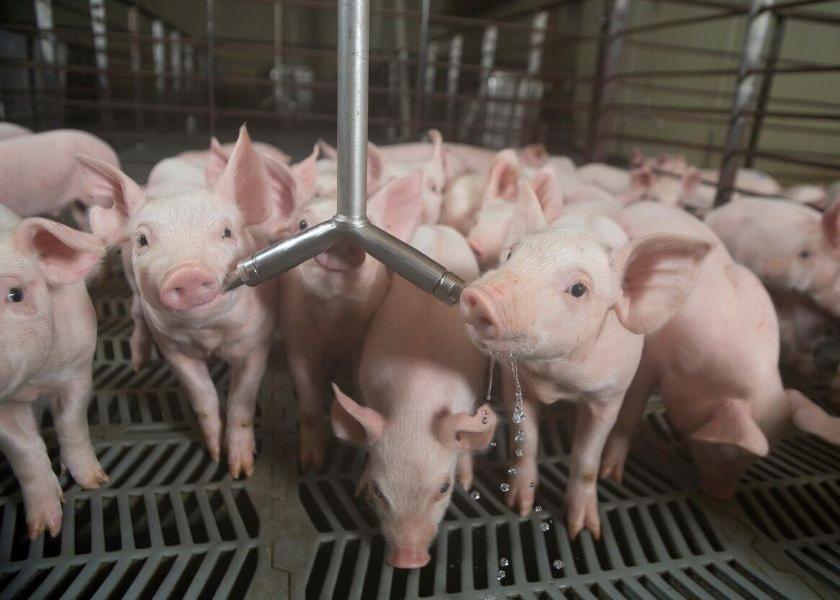Emerging Global Swine Disease Threats: Industry Actionables and Support

Emerging infectious diseases are a constant threat to the swine industry. Pathogens are generally considered emerging if they are new or if they have recently changed characteristics, such as an expanded geographic range, a difference in primary production phase affected, or an increase in clinical pathogenicity to the herd (USDA, 2017). Considering emerging disease threats to the swine industry, the Swine Health Information Center’s activities and actions – directed by the Center’s mission statement – help protect and mitigate emerging disease risks to the North American swine population.
- Monitoring domestic and global swine diseases
Reviewing swine disease monitoring reports, such as SHIC’s monthly domestic and global versions, is important to maintain an acute awareness of emerging swine diseases throughout the world. The Canadian Community for Emerging and Zoonotic Diseases also publishes a weekly intelligence report covering all species (CEZD, 2023). Japanese encephalitis virus, an example of an emerging disease, has been identified through global disease monitoring as a priority for North American prevention and preparedness activities. The US and Canada are currently negative for this mosquito-borne virus capable of infecting pigs and humans. In 2022, an outbreak of JEV genotype IV spread rapidly across new regions of Australia, affecting breeding swine herds and causing reproductive failure, stillbirths, mummified fetuses, and abortions (Australian Government, 2023).
- Obtaining a definitive diagnosis
SHIC offers support for diagnostic fees designed to identify newly introduced or emerging swine diseases. This support is available for cases where an etiology is not readily detected, or the presumed etiology is negative on routine testing. Diligently pursuing a definitive diagnosis is critical for early and rapid identification of newly emerging diseases, swift implementation of control strategies, and reducing production impacts and risk of spread. With SHIC’s diagnostic fee assistance, porcine sapovirus was identified as an emerging cause of diarrhea and enteritis in nursing piglets after routine diagnostics for porcine epidemic diarrhea virus, porcine deltacoronavirus, transmissible gastroenteritis virus, and rotaviruses were negative (Shen et al., 2022). This experience revealed the risks of narrowly focusing on a single pathogen during a diagnostic investigation, which may result in missed detections of emerging or less common pathogens (SHIC/AASV Webinar, 2023).
- Performing outbreak investigations
SHIC funded the development of the Standardized Outbreak Investigation Program to enable consistent epidemiological investigations of newly emerging swine diseases and identify biosecurity hazards after field outbreaks. Through deliberate data collection post-disease incursion, entry events most frequently associated with outbreaks are identified as the highest biosecurity hazards on the farm. In one case, the outbreak investigations of Actinobacillus pleuropneumoniae serotype 15 cases in central Iowa from November 2021 to January 2022 revealed mortality removal through rendering transport as a significant hazard. Identification of entry events at high risk for domestic disease entry enables biosecurity practices to target specific vulnerabilities and close biosecurity gaps for foreign and emerging swine disease incursion.
- Enhancing biosecurity across all phases of swine production
SHIC’s Wean-to-Harvest Biosecurity Research Program was launched in September 2022, along with the Foundation for Food & Agriculture Research and the Pork Checkoff, in response to an identified biosecurity gap. Considering the interconnectedness of the swine industry, biosecurity vulnerabilities and higher endemic disease prevalence in pigs post-weaning serve as a risk of emerging disease introduction and spread for all phases of swine production. To achieve a comprehensive biosecurity approach, new tools and technologies are currently being investigated through this program across three areas, including 1) site bioexclusion to prevent disease introduction, 2) site biocontainment to prevent disease spread, and 3) transport biosecurity to prevent disease movement from markets and first points of concentration back to the farm (SHIC/FFAR/Pork Checkoff, 2022). Research projects funded and underway investigate innovative biosecurity solutions such as self-vaccination technology to reduce the need for vaccine crews, novel biosecurity entrance systems as a replacement to shower-in, alternative cost-effective methodologies for livestock trailer and truck cabin disinfection and understanding motivators for increasing biosecurity protocol compliance of personnel.
Report adapted from presentation and proceedings paper for the Western Canadian Association of Swine Veterinarians conference on October 19, 2023. See original report with references authored by SHIC’s Dr. Megan Niederwerder and Dr. Paul Sundberg here.







